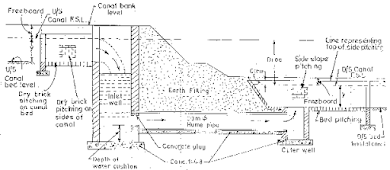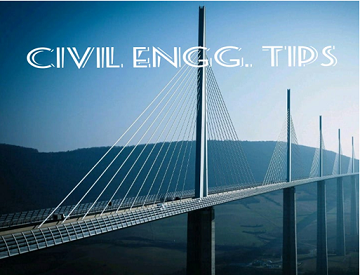Various types of falls have been designed and tried since the inception of the idea of 'falls construction came into being. The important types of such falls, which were used in olden days and those which are being used in modern days, are described below:
- Ogee Falls: The 'Ogee type fall' was constructed in olden days on projects like Ganga canal. The water was gradually led down by providing convex and concave curves, as shown in Fig.
The performance of such a fall was found to have the following major defects :
(i) There was heavy draw-down on the upstream side, resulting in lower depths, higher velocities and consequent bed erosion. Draw-down would also affect the supply in a distributary, situated just upstream of fall.
(ii) Due to smooth transition, the kinetic energy of the flow was not at all dissipated, causing erosion of downstream bed and banks.
A 'raised crest' was soon added to restrict the draw-down and a long protection was provided on the downstream side. Later, it was converted into a much better type of fall, called a 'Vertical Impact type'.
2. Well Type Falls or Cylinder Falls or Syphon Well Drops: This type of a fall consists of an inlet well with a pipe at its bottom, carrying water from the inlet well to a downstream well or a cistern. The downstream well, is necessary in the case of falls greater than 1.8 m and for discharges greater than 0.29 cumecs. The water falls into the inlet well, through a trapezoidal notch constructed in the steining of the well, from where it emerges near the bottom, dissipating its energy in turbulence inside the well.This type of falls are very useful for affecting larger drops for smaller discharges. They are commonly used as tail escapes for small canals, or where high levelled smaller drains do outfall into a low levelled bigger drain.
The notches could be designed to maintain the normal water depth in the upstream channel at any two discharges, as the variation at intermediate values is small. Hence, the depth discharge relationship of the channel remains practically unaffected by the introduction of the fall. In other words, there would neither be drawdown nor heading up of water, as the channel approaches the fall. These falls remained quite popular, till simpler, economical, and better modern falls were developed.










